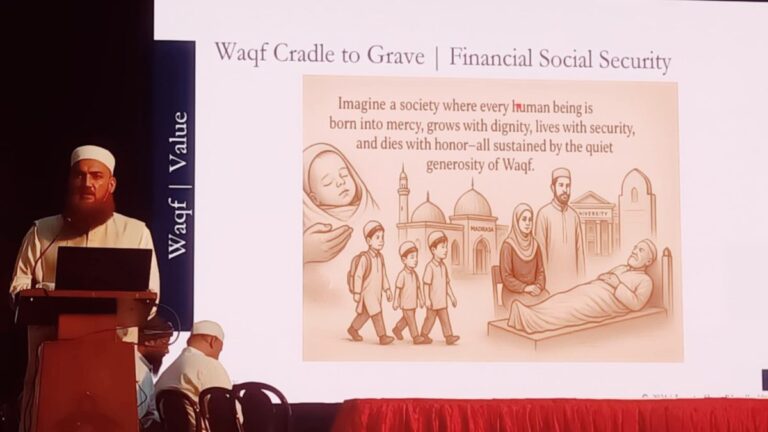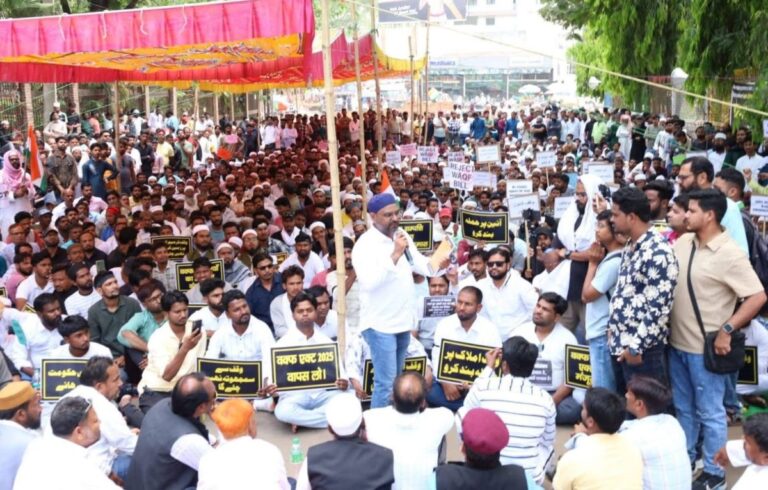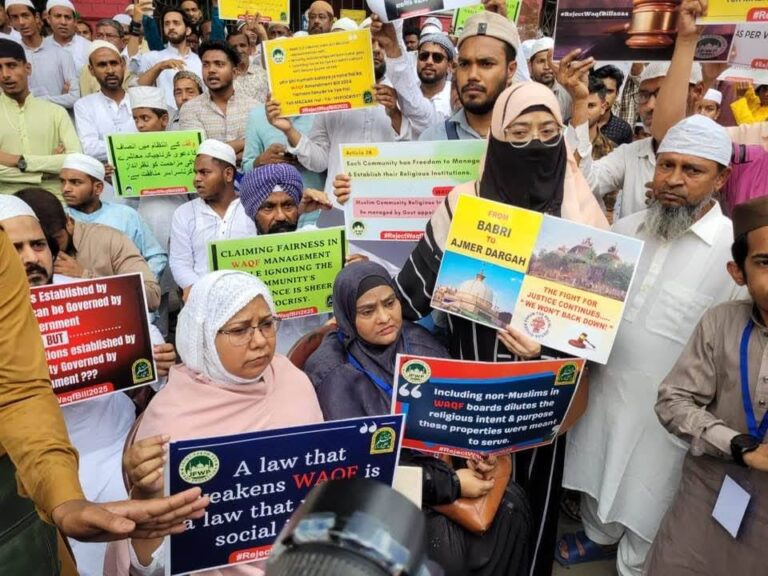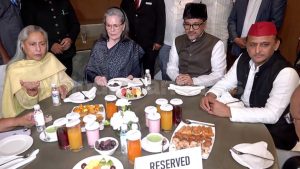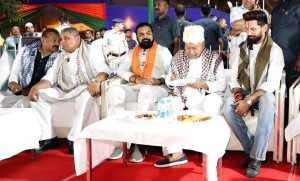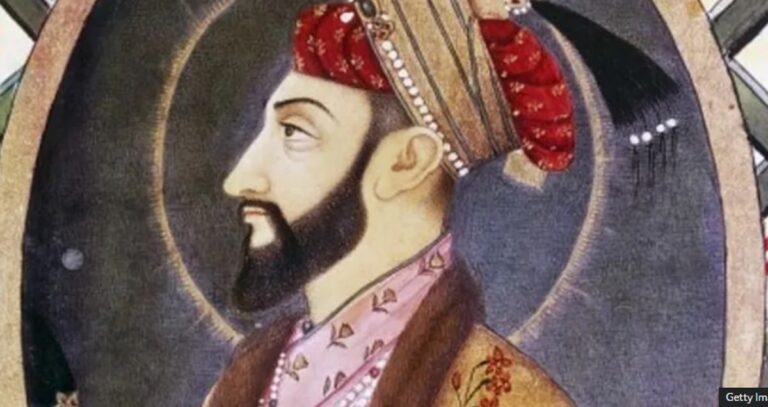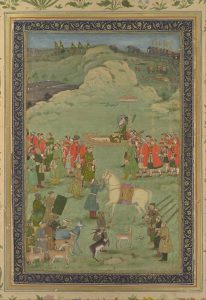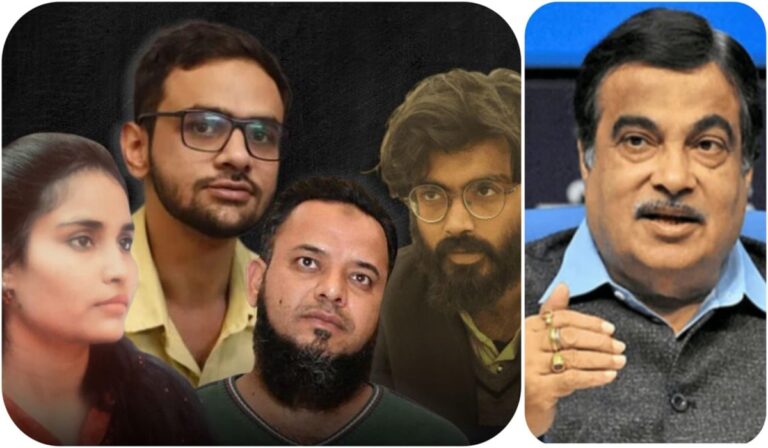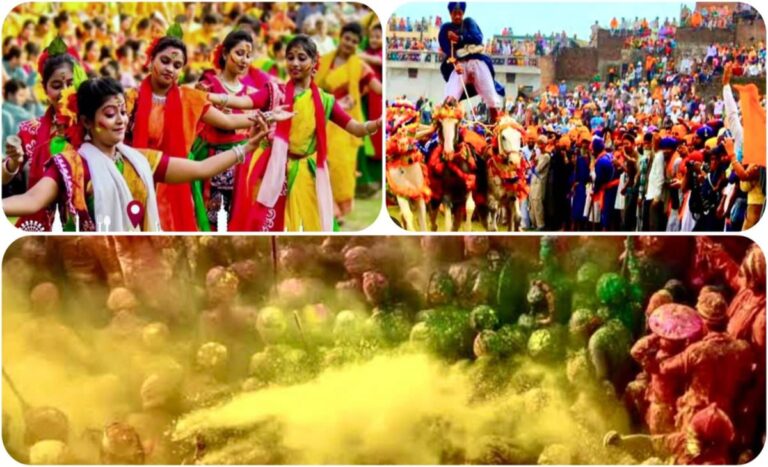[dropcap]A[/dropcap] recent article by Jawhar Sircar, the former Rajya Sabha member and IAS officer, published in The Wire, argued that communal riots in India, particularly during Ram Navami, are no longer spontaneous but strategically planned, funded, and carried out with impunity. He traces the roots of this phenomenon to historical events, beginning with the 1980s Ram Janmabhoomi movement, and even earlier, to the Rath Yatra of LK Advani and Doordarshan’s Ramayan in 1987. Supporting his arguments with multiple anecdotes, he stressed that Bengal, with no traditional Ram Navami celebration, has been forcibly introduced to armed processions post-2017. These efforts aimed to create religious polarisation where none existed, especially after the BJP’s electoral failures in 2014 and 2016.
Sircar’s argument can be vividly mirrored and substantiated by the recent Ram Navami procession at the Barrackpore Lok Sabha constituency in the district of North 24 Parganas. Once an industrial hub, it has become a flashpoint of communal tension in recent years, particularly after Arjun Singh, a former Trinamool Congress (TMC) leader who turned BJP strongman, emerged as a key figure. Known for muscle power and riot-mongering, Arjun Singh has instrumentalised Ram Navami as a show of Hindu assertion.
On April 7th, on the side of B.T. Road in Titagarh, part of the larger Barrackpore constituency, the Ram Navami procession passed by. It had all the hallmarks of celebration: saffron flags fluttering, devotional music, young men in festive attire, and rhythmic chants of “Jai Shri Ram.” It was fervent, visible, and emotionally charged. The atmosphere was intense, but not necessarily violent. Yet something about it felt unignorable. What we witnessed, needless to elaborate, spoke more through the silences between chants than through the decibels of the loudspeakers.
Now, moving slightly north to the Bhatpara constituency, after coming across a recent police complaint and a few viral social media posts, tensions simmered again in the Kankinara area — not just due to the events, but also due to the pattern.
Ram Navami, like many other festivals in India, is not the domain of any one political party. As a religious celebration, anyone can participate, and Hindu leaders from different political backgrounds often do. But festivals have not remained untouched by political currents.
As Irfan Ali Engineer argued while discussing Holi, religious festivals are increasingly being weaponised for communal polarisation. Though his critique was not Bengal-specific, the underlying mechanism is mirrored in multiple geographies. In his view, it’s not the faith or the festival that causes division, but the deliberate repurposing of these public rituals into performative shows of dominance, often at the cost of inter-community harmony.
Engineer’s framework, though rooted in the context of Holi, resonates powerfully with recent developments in West Bengal, especially the Ram Navami processions that, over the years, have undergone a clear shift in tone—from devotional celebration to political signalling.
Take, for instance, the Ram Navami procession in the Barrackpore Lok Sabha constituency where two prominent political figures, Somnath Shyam, MLA of Jagatdal, and Arjun Singh, MP of Barrackpore constituency, joined in as part of the larger religious event. Their presence per se isn’t contentious—or not—is a debate. Ram Navami, after all, is a religious celebration, open to participation across party lines. What is disturbing was the incident that started from the Mazdoor Bhawan, BJP party office located at Meghnamore, Jagatdal, where a group of young men emerged not with saffron flags alone, but waving Israeli flags.
This display wasn’t just unusual. When wearing a keffiyeh—a cultural symbol—can get you detained in Ontario, Canada, flaunting the Israeli flag in a religious procession is a matter of honour for the complicit.
As Arjun Singh reached Kankinara, he was seen holding the Israeli flag, which he also acknowledged in video footage. While this act may be defended under the guise of symbolic solidarity, its implications—especially in a communally sensitive area like Barrackpore—are deeply troubling.
The justification that Arjun Singh offers for carrying the Israeli flag is that Israel is a “friend of India.”
But what kind of friendship are we endorsing—military? Ideological? Selective solidarity?
Can a religious festival be used to endorse a foreign state’s political agenda?
Is it really about religion anymore, or has it become a performance of power?
His repeated invocation of the term “Jihadi” in the same footage further sharpens the edge of this symbolic aggression. It is not merely political rhetoric; it is a deliberate dog whistle, designed to otherise and vilify the Muslim community. When leaders equate Muslims or dissenters with “jihadis” (remember Corona Jihad instigated by the same Arjun Singh during lockdown), that underlines the message that Muslims are threats, outsiders, or enemies. In such a context, waving the Israeli flag—which, in the present geopolitical moment, carries significant communal overtones—serves as a calculated provocation.
One might say, those who casually use “jihadis” to describe Muslims find natural comfort in waving the flag of a state currently associated with military aggression, war crimes, and genocide. Such gestures are not about faith; they are about power, polarisation, and political gains—or a premise for the upcoming 2026 Assembly elections in Bengal.
This is not just conjecture. In Barrackpore, residents take immense pride in their shared heritage. A vivid example is the Karbala Grounds located in areas like Titagarh and Kankinara, among others. Here, during Muharram, Hindus and Muslims have historically participated with equal devotion. In such a context, when two individuals allegedly flared a saffron flag marked Bhagwa on the Kankinara Karbala ground, it was seen as an incitement to communal tension. The response from the locals was immediate and unified—they gathered at the Bhatpara police station, demanding the arrest of the men responsible.
But the question remains: should the leaders not be held to a higher standard in volatile times? When festivals become political theatres, and peace becomes performative, what are we left with?
The question isn’t whether festivals should be celebrated. They must be, and vibrantly so. The concern is how, where, and to what end. If faith is the core, then coexistence must be its soul. But if political signalling is the driver, then even joy can be laced with intimidation.
As Irfan Engineer and Sircar both point out, “Communalism doesn’t erupt overnight. It simmers in silence, builds through symbols, and bursts forth through orchestrated rituals.”
Many of us are boycotting global brands like PepsiCo, Unilever, Nestlé, P&G, and McDonald’s—brands that either operate in or support Israel. Lists are shared widely. Indian alternatives are being explored, including Reliance products. But has Reliance spoken out against what’s happening in Palestine?
No.
Have they supported Israel openly?
Not officially.
But has silence become the new alignment with power?
More often than not, yes.
This is why it hurts even more when the same political forces waving Israeli flags here claim to be caretakers of Indian Hindus.
Because how can they speak for those when Hindus across India are speaking for Palestine and resisting Israel?
How can they hijack symbols of devotion to serve a divisive narrative?
Even the platform you are reading this on—what it promotes, what it censors—it shapes our thinking too.
Why were Israeli flags carried during Ram Navami in Kankinara?
What message does it send to both Muslims and Hindus in Bengal who have always co-participated in their shared rituals?
What exactly are we being trained to cheer for?
Is consumer activism enough, or are we also responsible for the narratives we normalize?
Because this is not just about chips, shampoo, or boycotts.
We are not just choosing what to consume.
We are choosing what to fund.
And, crucially—what to remain silent about.
But there’s more.
A few days ago, the RTI activist Jiten Nand of the No NRC Movement (Metiabruz) said something that echoed louder than ever.
We were trying to figure out a way—any way—to send relief to Gaza.
I reminded him of the political climate, how dissent is being strangled, and how the state machinery is being used to monitor, harass, and arrest people for caring too loudly.
And then he said something, and I am sharing that with you:
“Let the transaction happen in my name. It will be transparent, it will be accountable. And even if I am arrested, I won’t mind. Because if I don’t stand with Gaza now, in any form, I won’t be able to forgive myself.”
That sentence is a reminder:
That neutrality is not safe. It’s surrender.
That silence is not peace. It’s compliance.
And that sometimes, choosing to act is the only way to live with ourselves.
I’m not telling you what to boycott or whom to vote for.
I’m asking you: Can we afford to look away when we smell what’s cooking in the garb of religion right before elections—and how genocide continues, even after public outrage around the world?
Can we still claim innocence when symbols of culture and devotion are turned into tools of hate?



